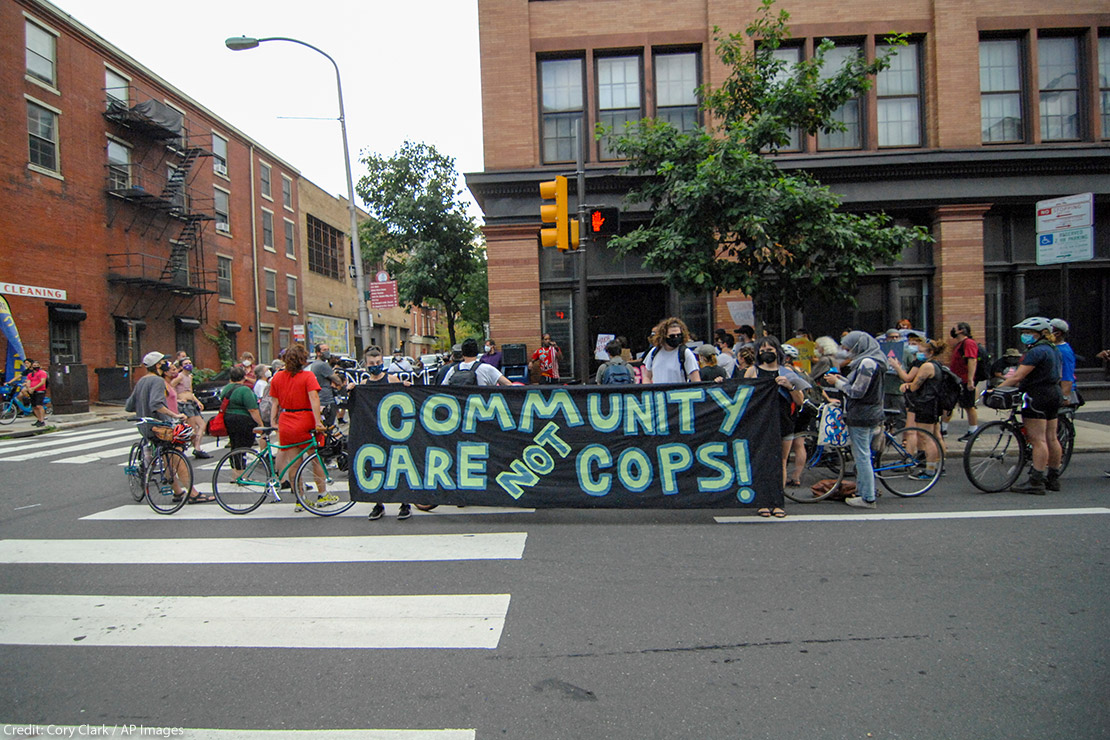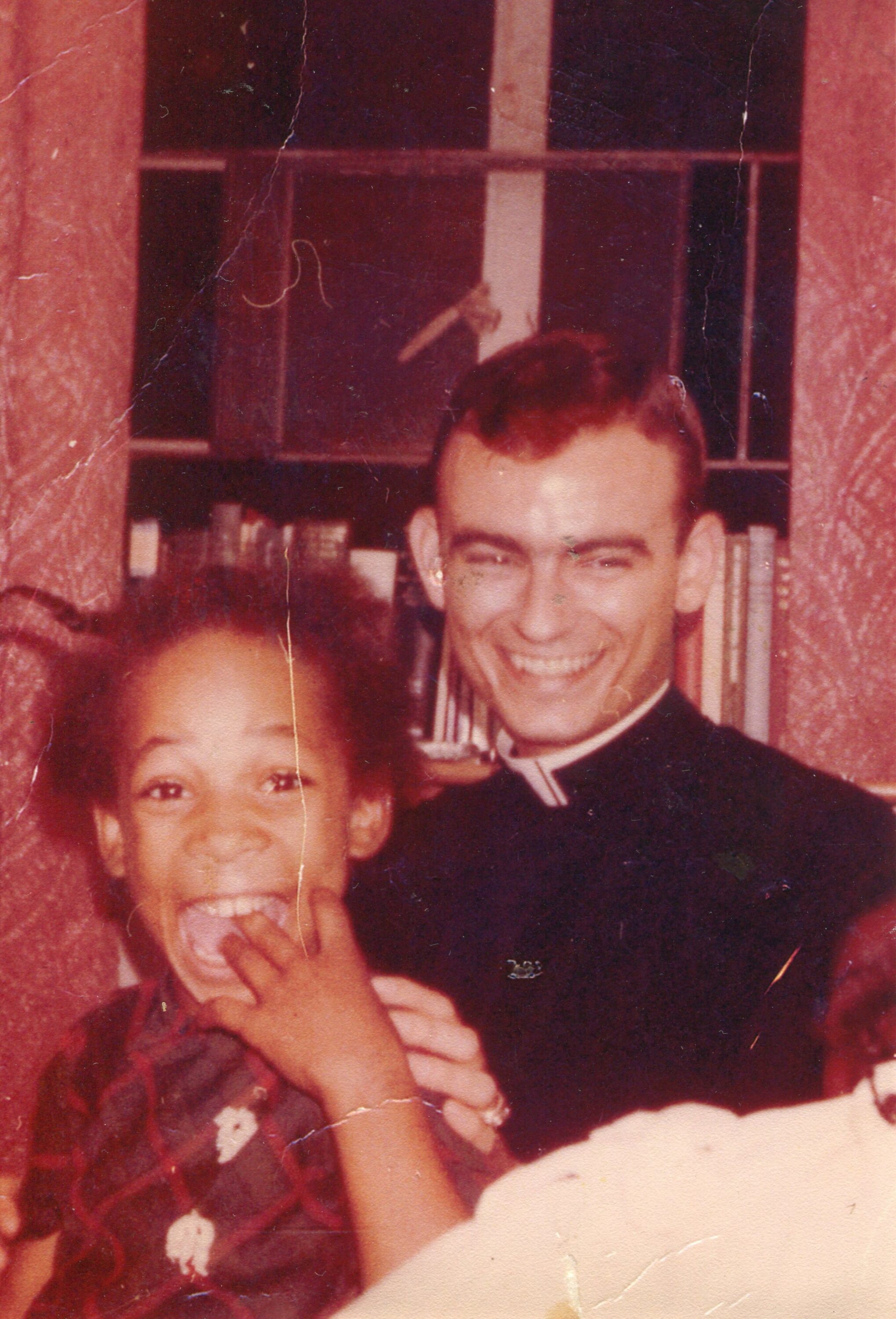
On the morning of March 7, 1965, 7-year-old Sheyann Webb-Christburg scrawled a note to her parents and set it on the washing machine before quietly slipping out of her home in Selma, Alabama: “I am marching for our freedom.”
Her parents warned her not to join the more than 600 other marchers that day, bound for the Edmund Pettus Bridge and then Montgomery. They knew it would be dangerous, and they were right — March 7 would come to be known as Bloody Sunday.
“But I had become disobedient,” Sheyann told the ACLU in a recent interview. “I had already made up my mind, and nobody was going to turn me around. I wanted to fight for something that my parents couldn’t fight for.”
“I wanted to fight for something that my parents couldn’t fight for.”
That fight, of course, was to ensure that Black Americans could freely exercise their constitutional right to vote, a right that had existed on paper for nearly a century. In practice, Black voters were systematically denied this right through poll taxes, intimidation, literacy tests, and violence when they tried to register or vote, particularly in Southern states.
The morning of the march, Sheyann sat in the back row of the church and listened as John Lewis and Hosea Williams roused the crowd of marchers and shared instructions. As they lined up to leave the church, several adults told her she couldn’t march — she was too young, and she had to stay back, they said. Sheyann burst into tears. But Margaret Moore, a local teacher and civil rights activist, grabbed her hand and said, “Come on, child.”
With the youngest participant in tow, the marchers began. Their goal was to reach the capitol in Montgomery and send a message to the state’s white supremacist governor, George Wallace — to draw attention to the injustices Black Americans faced through nonviolent direct action. As they started down the street, white onlookers stood on the side of the road, yelling slurs and spitting on the marchers to discourage them. They held their heads high, and kept going to the bridge.
“When we got to that bridge, I looked down and my heart began to beat very fast,” said Sheyann. “I saw hundreds of policemen in gas masks, state troopers on horses. I saw the dogs. The billy clubs. I just knew something was going to happen.”
The demonstrators kneeled down in the street to pray. The police told Lewis and Williams to turn the crowd around, but they refused, and the marchers were met with brutality: clouds of tear gas filled the air, and police and troopers beat them. Horses and dogs ran into the crowd, trampling people. Those who were able began to run.
“As I was running, my eyes were burning,” Sheyann said. “I was just devastated … Hosea Williams picked me up, my little legs still galloping in his arms. I told him in my childish voice, ‘Put me down! You are not running fast enough.’ Of course, he held on and continued to run.”
“The picture of Bloody Sunday has never left my mind, and neither my heart,” she added.

A photo of Sheyann Webb.
Credit: Sheyann Webb
Sheyann grew up in the George Washington Carver Homes, a public housing project, and she often played on the lawn of the nearby Brown Chapel Church — it was a good spot for hopscotch and jumping rope. One spring day while playing with her friend Rachel, four beautiful, shiny cars pulled up outside the church. As the cars parked and the passengers got out, the girls noticed them gathering around one man in particular, helping him put on a suit jacket over a crisp white shirt.
“Do you know who this man is?” one of the men asked the girls as they looked on. “This is Dr. Martin Luther King, Jr.”
Dr. King greeted the girls, making small talk about where they lived and what school they attended, and they followed him along as the group walked toward the back entrance of the church. “You girls can go on and play now, we’re having a meeting,” the man who first greeted the girls told them. But Dr. King had a different idea.
“No,” he said. “Let them stay.”
Webb and her friend followed them into the church, and her lifelong fight for civil rights began. Dr. King’s warmth and interest immediately struck a chord with Sheyann.
“Before he left that day, he told me he was coming back to Selma and that a movement was about to start,” said Sheyann. “Little did I know what that movement was, but all I knew was that I wanted to be there.”
She began regularly attending meetings and rallies at Brown Chapel Church. There, she found herself in the company of civil rights legends. She traveled with them to neighboring counties and communities to encourage voter registration.
“I would see so many Black people who were afraid to even think about becoming registered voters,” said Sheyann. “I used to see that fear in their eyes, and I always thought, if that was a right that we had, why were people afraid? Why did they fear having that right?”
Her education in voting rights was swift, and profound. “As I matriculated in that movement, I understood how powerful it was to have the right to vote,” she said. Talking to people throughout the community helped her understand the gravity of that right and the dangers Black people faced for exercising it, even as a little girl. Dr. King would go on to nickname the precocious 7-year-old “the smallest freedom fighter.”
While her parents disapproved of her activism at first, fearing for her safety, they eventually came around. For her 10th birthday, Sheyann asked them to register to vote as a gift, and they did.
“After my father registered, he never missed a vote,” said Sheyann. In 2008, her father was ill with cancer, and had grown very frail. But he insisted on casting what would be his last vote for Barack Obama. “We made special preparations to get him to the polls so he could vote for our first African American president,” Sheyann remembered. “And that made him happy.”

A photo of Sheyann Webb with seminarian and civil rights activist Jonathan Daniels.
Credit: Sheyann Webb
Today, at 66, Sheyann is still dedicated to getting out the vote. After graduating from Tuskegee University in 1979, she wanted to find a way to inspire young people to take action, just as she had been inspired by her participation in the civil rights movement. She founded KEEP Productions Youth Development Mentoring and Modeling Program in 1980. Based in Montgomery, the program is designed to reach young people and help them build self-confidence, break out of unproductive patterns, and become successful leaders.
A key part of the program is community service, including canvassing in communities to encourage people to vote. KEEP has been operating for more than 42 years, and has reached thousands of young people. Sheyann has traveled across the country speaking to prospective voters and sharing her story, which was told in the book “Selma, Lord, Selma” in 1980, and later made into a film.
Sheyann is no stranger to the frustration that many young people feel today amidst the many challenges facing our country, and our democracy. She is struck by the fact that the very thing she marched for as a 7-year-old — the right to vote — is still under attack. These challenges are all too familiar.
“Being a Black person, being African American, fighting for your life — you see people die for that, only when they were doing what was right,” she said. “And it’s still happening. That pain does not change. The anguish doesn’t change. It hurts. But we got to stay in the fight.”
“Being a Black person, being African American, fighting for your life — you see people die for that, only when they were doing what was right.”
She hears that same angst from some of the young people she talks to, and she tries to convey to them that the right to vote is a powerful tool that we each have a responsibility to use.
“There’s no time for complacency,” she said. “With all that we’re being challenged with today, you need to be part of that change by exercising your right to vote. We all have the opportunity to join hands and hearts and to work together to build that community that Dr. Martin Luther King envisioned.”
Comments
Post a Comment